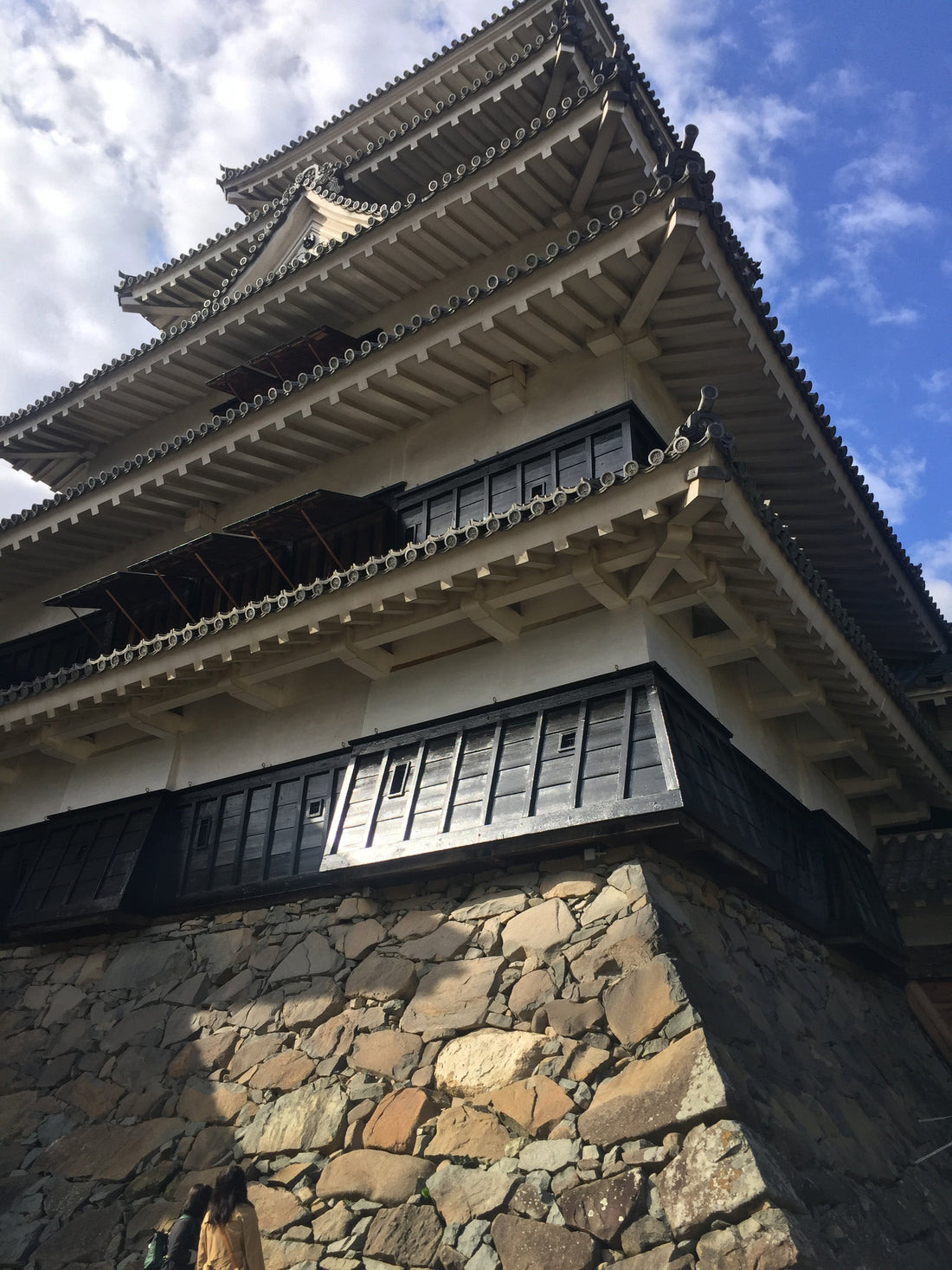
Matsumoto Castle and Its Stone Walls - From the Sengoku Era to Edo, and the Story of Preservation
Share
Contents
1. Introduction

Matsumoto Castle is one of Japan’s “Five National Treasure Castles” and is considered among the most beautiful of the twelve surviving original keeps (Tenshu, the central main tower). The jet-black main tower reflected in the waters of its moat has earned it the nickname Karasu-jō (“Crow Castle”), enchanting visitors through the four seasons. Yet the elegant exterior is supported at its core by the stone walls painstakingly built by generations of stonemasons across centuries. These stones are not mere building materials — they are “a history book carved in stone,” preserving memories of warfare and symbols of authority. To tell the story of Matsumoto Castle is impossible without speaking of its stone walls. As the author, I visited Matsumoto Castle on November 2, 2016 (JST) and examined the stonework firsthand; this article reflects those observations cross-checked with official sources.
2. Beginnings in the Sengoku Era — The Nozura-zumi Stone Walls
The predecessor of Matsumoto Castle was a small fortress called Fukashi-jō. The Shinano region, with its rivers and mountains, was a strategic crossroads and thus a key prize for competing warlords. During the Sengoku era, as the Takeda and Ogasawara clans contested the area, the fortress was strengthened, and its earliest stone walls were constructed. Their method was known as Nozura-zumi (fieldstone piling: using unshaped natural stones stacked with little or no cutting).
This technique relied on friction and the sheer weight of stones. The irregular contours interlocked to create a rugged yet naturally beautiful wall. This archetype of Sengoku-period masonry later evolved into more refined methods, marking a turning point in Japan’s castle-building culture.
3. The Honnō-ji Incident and the Start of Construction
In 1582, the Honnō-ji Incident occurred, when Akechi Mitsuhide, a vassal of Oda Nobunaga, betrayed and attacked his lord. This coup shook the Oda regime, which had been close to unifying Japan. The power balance in Shinano also became unstable, forcing a reorganization of its castles.
When Toyotomi Hideyoshi’s campaign against the Hōjō clan (the Siege of Odawara) concluded in 1590, Ishikawa Kazumasa was transferred from Mikawa to Matsumoto. Thus began the great project to transform Fukashi Castle into what is now Matsumoto Castle.
4. Completion of the Keep Complex - A Miracle of Survival

By 1593–1594, the main keep (five stories, six interior floors), the Inui small tower, and connecting corridors were completed. Remarkably, these core towers have survived in their original 16th-century form, making Matsumoto Castle one of the few places in Japan where one can see a complete keep complex from the late Sengoku period.
5. Evolution of the Stone Walls - From Nozura-zumi to Uchikomi-hagi

Matsumoto Castle’s stone walls embody two different stages of Japanese masonry. Alongside the early Nozura-zumi walls, later Uchikomi-hagi (hammer-dressed masonry: roughly shaped stones fitted with flat faces outward) walls were introduced in the early Edo period.
These Uchikomi-hagi walls were more uniform and sturdier. They also incorporated a subtle inward curve (sori) making them harder to climb and visually imposing. Today, visitors can observe both rugged Nozura-zumi and orderly Uchikomi-hagi walls side by side — a rare chance to view the evolution of Japanese stone masonry.
6. Crisis in the Meiji Era - The Abolition of Castles and the Preservation Movement



In 1873 (Meiji 6), Japan’s new government issued the Castle Abolition Ordinance (Haijōrei, 廃城令), deeming castles obsolete military facilities of the feudal regime. Many castles nationwide were dismantled. Matsumoto Castle, too, faced auction and possible destruction.
At this critical moment, local citizens, led by Ichikawa Ryōzō, raised funds and repurchased the castle keep, preventing demolition. Thanks to their efforts, Matsumoto Castle still stands today. The stone walls remain as “silent witnesses to a miracle of preservation.”
7. National Treasure Designation and Stone Heritage Today

After surviving the Meiji crisis, Matsumoto Castle endured cycles of decay and restoration. In 1936, it was designated a National Treasure (Kokuhō, 国宝), though this status was temporarily annulled under postwar reforms. In 1952, it was re-recognized as a National Treasure, a title it retains today.
Visitors can now experience the contrast of stone wall styles, the original 16th-century keep, and steep staircases that embody Sengoku-era defense strategies. Matsumoto Castle is not just a monument but a living classroom in Japanese history.
8. Conclusion
The stone walls and keeps of Matsumoto Castle are truly “a history book in stone” and “a miracle of survival.” Construction began in 1590 under Ishikawa Kazumasa and was completed in 1593–1594. Over 400 years later, they still convey the realities of late Sengoku Japan. From the turmoil of war, through Edo stability, the Meiji crisis, and the Shōwa-era designation as National Treasure, Matsumoto Castle has weathered the storms of history.


